#lucy hicks anderson
Explore tagged Tumblr posts
Text

Lucy Hicks Anderson transitioned at age 15 in 1901. A talented chef, she earned enough to buy a house for a prohibition-era brothel and speakeasy. She was beloved in her community of Oxnard, California, until she had to move after the district attorney publicly outed her as trans. She went to court for writing "female" on her marriage certificate in 1945. During her trial, she challenged the public: “I defy any doctor in the world to prove that I am not a woman. I have lived, dressed, acted just what I am, a woman.” The jury still convicted her despite her popular reputation. You can read more about her story in C. Riley Snorton's Black on Both Sides.
246 notes
·
View notes
Photo
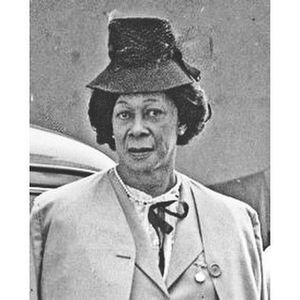
Black History Month: Lucy Hicks Anderson
“I defy any doctor in the world to prove that I am not a woman. I have lived, dressed, acted just what I am, a woman.
-Lucy Hicks Anderson, quoted in The Oxnard Press-Courier, 24 November 1945
Lucy Hicks Anderson was born in 1886 in Waddy, Kentucky. Despite being assigned male at birth, by her own account, Lucy always dressed in girls’ clothes, and was encouraged by her mother and local doctor to live life as a girl.
In 1926, Lucy moved to Oxnard, California. She quickly made a name for herself in the town as an excellent cook and a housekeeper to prominent families. She was respected in her community, raising money during WWII for soldiers abroad, and supported their families at home.
As well as her more legal occupations, Lucy also ran brothels and bars. In 1945, Lucy was arrested following a raid on her brothel, and forced to undergo a medical examination, where it was revealed she was assigned male at birth. This would ultimately lead to three separate legal trials around her gender presentation - one for perjury, one for fraud, and one for evading the draft. Testifying in court, Lucy declared that “I have lived a good citizen for many years in this town and am going to die a good citizen, but I am going to die a woman.” She served around 18 months in prison.
Throughout and following her trial, the community of Oxnard remained supportive of Lucy. It seems some people knew Lucy was trans before her public outing, and simply accepted it. Her obituary in the Oxnard Press-Courier reads: “Nobody in Oxnard mocked Lucy. Her friends, both white and colored offered their sympathy, and still referred to Lucy as ‘her. And Lucy continued to wear women’s clothes, continuted to call herself Lucy Hicks Anderson. That was the name she was using when she died...”
Learn more
[Image: Lucy facing the camera, fashionably dress in a large hat and a pale jacket]
#lucy hicks anderson#lucy hicks#black history month#black history#queer history#trans history#lgbt history#lgbtq
517 notes
·
View notes
Text
Celebrating Black Queer Icons:
Lucy Hicks Anderson
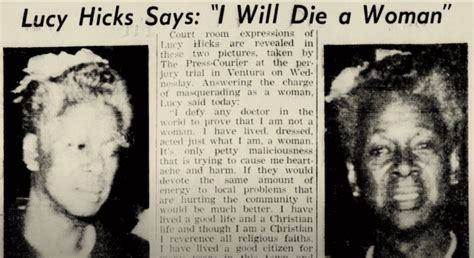

Lucy Hicks Anderson was born in 1886 in Waddy, Kentucky. Anderson is known as a socialite and chef that became well known in Oxnard, California from 1920 to 1946. She became the first black trans woman to defend her identity in a US courts. From an early age Anderson identified as a girl. On advice from doctors, Anderson's parents accepted and supported this. Anderson would attend school in gender affirming clothing, such as dresses, under a name of her own choosing, Lucy. At the age of 15 Anderson left school and began supporting herself through domestic work. At 20 Anderson moved to Pecos, Texas where she worked in a hotel. Anderson next moved to New Mexico, where she met her first husband, Clarence Hicks, in 1920. At age 34 Anderson, and her then husband, moved to Oxnard, California. Anderson proved herself a skilled chef and baker, winning some contests. Anderson's marriage to Hicks eventually ended in divorce. After which Anderson used money she had saved during the marriage to purchase a boarding house. The boarding house served as a front for a brothel, and the sale of alcohol during prohibition. Outside her time as a Madame and managing a boarding house, Anderson also became a well known socialite and hostess. Connections made during this time would prove fruitful during Anderson's subsequent legal troubles. It is said that Charles Donlon, a prominent banker, helped get her out of jail, after her initial arrest, on the grounds that he was hosting a significant dinner party that would have fallen apart without Anderson's involvement. In 1944 Anderson married her second husband, Reuben Anderson. About a year later, in 1945, a sailor claimed to have received a sexually transmitted infection from one of the women working in Anderson's brothel. This led to all women working there being subject to medical examination, including Anderson. When the Ventura County DA was informed that Anderson was assigned male at birth he chose to charge her with perjury on her marriage license. During this trial Anderson would utter the famous lines "I defy any doctor in the world to prove that I am not a woman." and "I have lived, dressed, acted just what I am, a woman". Anderson was ultimately convicted of perjury and sentenced to 10 years probation and her marriage license was deemed invalid. This also led to the Federal Government to charge Anderson with fraud, based on her receiving spousal rights from the GI Bill. Lucy and Reuben Anderson where both found guilty and sentenced to a men's prison. Anderson was forbidden by the court to wear women's clothing during this time. After their release Lucy and Reuben Anderson moved to Los Angeles, California where they lived quietly until her death in 1954, at the age of 68. Debra A Harley and Pamela B Teaster's (editors) Handbook of LGBT Elders (link to Archive.org copy of text) notes Anderson as "one of the earliest documented cases of an African-American transgender person". Anderson is the subject of the 2nd episode of HBO's Equal, where she is portrayed by actress Alexandra Grey.
This was definitely one of the more informative of these write ups, for me. I was familiar with both the quotes Anderson made during her trial, but didnt know anything about the woman. Wilmer "Little Axe" Broadnax has been mentioned in several of these end notes, so he is definitely next. I think i pretty much have the rest of these planned out, but as always, corrections and suggestions are welcome and desired.
#celebrating black queer icons#black history#black history month#black history is queer history#black history is american history#Lucy Hicks Anderson#oxnard#ventura county#hbo series#equal#handbook of LGBT elders#queer elders#elders
200 notes
·
View notes
Text
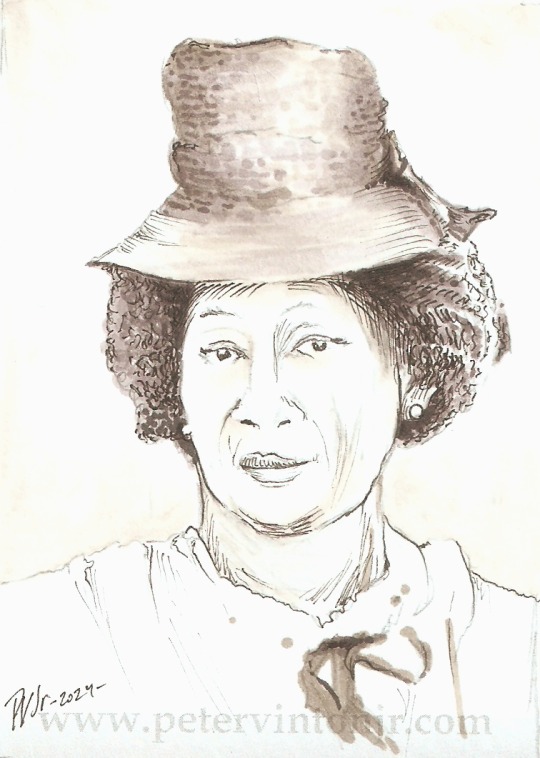
Welcome to Pride Month, 2024 (and incidentally also marking the fourth anniversary of the start of this project). Let us kick things off with a look at the life of Lucy Hicks Anderson, who was born in 1886 Kentucky (which should help set some context).
Identifying and dressing/behaving as a woman, Lucy (neé Lawson) was raised by uncharacteristically supportive parents (for the time) and even took the advice of an equally uncharacteristically supportive physician to continue to live as her true self. She worked as a domestic at a Pecos, Texas hotel and studied to become a chef, meticulously saving her money over the next ten years. She moved to Oxnard, California in 1920, where she married her first husband, Clarence Hicks. The couple bought several properties and opened a number of businesses; to include restaurants, a speakeasy, and a bordello (brothel). The couple divorced in 1929 but Lucy continued to operate and manage most of the properties.
Over the Prohibition years Lucy became well-known in her community, donating to local charities and hosting lavish parties for men headed off to war --and also consoling grieving spouses and parents. Lucy had become a well-known socialite and a deeply admired figure in the eyes of local politicians, clergy, and law enforcement alike --even selling bootleg liquor (a practice the local constabulary just never quite seemed to notice!) By the time of her second marriage to U.S. Army soldier Reuben Anderson in 1944, she had purchased nearly $50,000 in war bonds.
After the war, U.S. Navy sailors and officers reported an STD outbreak, which was unfortunately traced back to Lucy's bordello. Over the course of the investigation Lucy's "ruse" was exposed and she and Reuben were both arrested on fraud charges and ultimately charged with perjury since it was illegal for two "men" to be married in the state of California at the time --invalidating Lucy's marriage license and making her the first Black American trans woman to be put on trial for her identity. The fraud charges stemmed from the fact that Lucy had been receiving subsistence allotments as the wife of a soldier.
Lucy defended herself vigorously in court (also making her the first-ever recorded trans person to do so), and while at first was only looking at ten years' probation, ultimately the added fraud charges drew a much harsher sentence, and she and Reuben were sent to separate Federal prisons. They were also banned from the town of Oxnard and a very specific prohibition was laid onto Lucy, forbidding her from ever wearing women's clothing. Upon serving out their sentences in 1950, the couple resettled in Los Angeles. Lucy herself died in 1954.
#blm#black lives matter#black history#pride month#lgbtq+#trans pride#lucy hicks anderson#prohibition#teachtruth#dothework
5 notes
·
View notes
Text
LUCY HICKS ANDERSON // SOCIALITE
“She was an American socialite and chef, best known for her time in Oxnard, California, from 1920 to 1946. Assigned male at birth, she was adamant from an early age that she was a girl. Her parents, based on advice from doctors, supported her decision to live as one. She later established a boarding house in Oxnard, where she became a popular hostess. In 1945, a year after she married her second husband, she was arrested, tried and convicted of perjury, as the government said she had lied about her sex on her marriage license. After her release from prison, she and her husband moved to Los Angeles.”

0 notes
Text
#30DaysofPride: Day 1- Lucy Hicks Anderson
It’s pride Month 2024! You know what that means. It’s time for another edition of 30 days of pride! A daily series where I highlight a person in queer history who deserves the recognition! Today’s pick is, Lucy Hicks Anderson, trans icon, Madame, socialite, and pillar of the Oxnard, California community. Lucy Hicks anderson was born in Waddy, Kentucky in 1886. she insisted on wearing girl…

View On WordPress
#30DaysOfPride#C. Riley Snorton#Christine Jorgensen#lgbt#LGBTQIA#Lucy Hicks anderson#queer#Trans People have always been here#transvisibility#visibility
1 note
·
View note
Text
Black Queer Figures Day 1
In honor of Black History month I’m doing daily research on Black queer figures for a club I run, and I figured maybe people on the internet would be interested in this stuff.
Lucy Hicks Anderson
Lucy, born in Kentucky in 1886, was assigned male at birth. From an early age, she insisted she was a girl, and the doctor her parents sent her to suggested they just let Lucy live as a girl. As an adult, Lucy became well-known as a socialite and chef. After her first marriage, she bought and ran a brothel. The brothel also supplied illegal liquor during Prohibition. While arrested twice, her notable reputation and connections bailed her out. In 1944 Lucy married soldier Rueben Anderson. In 1945, a venereal disease outbreak occurred at the brothel, and all workers were examined by a doctor. It was during this examination the doctor found out that Lucy was born male. The county court declared her marriage to Anderson invalid and charged her with lying on her marriage license (a marriage was only considered valid if between in a man and a woman, and Lucy was not considered a woman). She was also charged with fraud for receiving payments from her husband under the GI bill. Both she and Anderson were sentenced to prison, and Lucy was not permitted to dress as a man. After their release, the couple moved to Los Angeles and lived there until Lucy's death in 1954.
#black history#black history month#lgbt pride#lgbtq#trans women are valid#Lucy Hicks Anderson#black women#black woman appreciation#black history matters
0 notes
Note
Hello, I have a question. I have been feeling down recently and I know you've posted about a few trans people in history who were loved and accepted in their communities or by their friends and family. Do you have a list of people like that? It is very encouraging for me to read about trans people in history being loved for who they are
A few I know of off the top of my head:
Alan L. Hart: His grandparents supported his gender expression despite his parent's transphobia. His grandfather would make him boy's toys, and both their obituaries listed him as their grandson. He went on to be a pioneer of tuberculosis medicine by using X-rays to catch the disease early.
Lucy Hicks Anderson: Expressed her female identity at a young age. Her parents were advised by a doctor to raise her as a girl, and they did. She became a skilled chef, a madame, and a bootlegger during Prohibition. She was publicly outed as part of a trial in which her and the sex workers she employed were required to have a medical exam. During the trial, she told the court: "I defy any doctor in the world to prove that I am not a woman. I have lived, dressed, acted just what I am, a woman." I imagine that part of her defiance comes from having had the support of her parents and doctor from such a young age.
Berel-Beyle: Born in a Ukrainian shtetl and known to be GNC, when he was 21 he found a doctor who provided him transition care. When he returned, his community welcomed him back in his new male role. He took part in men's-only prayers and married to his girlfriend. The man who told his story wrote that "In our shtetl, Berel-Beyle always had a good name as a fine, upstanding Jew."
Trygonion: Described in an epitaph, she was a priest/ess of Rhea in the same tradition as the galli, the eunuch priest/esses of Cybele. The English translation starts "Here lies the tender body of a tender being." Philodemus describes them as darling, devout, and compares her to the famously beautiful sex worker Lais. The ending is also beautiful: "Give birth, you holy soil, round the grave-stone of the maenad not to brambles but to the soft petals of white violets."
179 notes
·
View notes
Note
For the trans Trixie anon, they should look into Dora Richter and the Institut für Sexualwissenschaft, which was a progressive research institute for gender and sexuality in the Weimar Republic during the 1920s. For more USAmerican examples of trans people in the early-mid 20th century: Lucy Hicks Anderson, Alan L. Hart, Billy Tipton, and of course, Christine Jorgensen.
!!!!
87 notes
·
View notes
Text
Black on Both Sides: A Racial History of Trans Identity by C. Riley Snorton

The story of Christine Jorgensen, America’s first prominent transsexual, famously narrated trans embodiment in the postwar era. Her celebrity, however, has obscured other mid-century trans narratives—ones lived by African Americans such as Lucy Hicks Anderson and James McHarris. Their erasure from trans history masks the profound ways race has figured prominently in the construction and representation of transgender subjects. In Black on Both Sides, C. Riley Snorton identifies multiple intersections between blackness and transness from the mid-nineteenth century to present-day anti-black and anti-trans legislation and violence.
Drawing on a deep and varied archive of materials—early sexological texts, fugitive slave narratives, Afro-modernist literature, sensationalist journalism, Hollywood films—Snorton attends to how slavery and the production of racialized gender provided the foundations for an understanding of gender as mutable. In tracing the twinned genealogies of blackness and transness, Snorton follows multiple trajectories, from the medical experiments conducted on enslaved black women by J. Marion Sims, the “father of American gynecology,” to the negation of blackness that makes transnormativity possible.
Revealing instances of personal sovereignty among blacks living in the antebellum North that were mapped in terms of “cross dressing” and canonical black literary works that express black men’s access to the “female within,” Black on Both Sides concludes with a reading of the fate of Phillip DeVine, who was murdered alongside Brandon Teena in 1993, a fact omitted from the film Boys Don’t Cry out of narrative convenience. Reconstructing these theoretical and historical trajectories furthers our imaginative capacities to conceive more livable black and trans worlds.
#black on both sides#black on both sides: a racial history of trans identity#c. riley snorton#transfem#transmasc#trans book of the day#trans books#queer books#bookblr#booklr
77 notes
·
View notes
Text
I was literally told to "actually research" Trump because I guess I must be wrong huh. I literally went directly to his site, showing his plans for America. One of which he discussed trans ppl and "getting rid of Joe Biden's cruel idea of transgenderism" so lemme spill my spill I guess. Just some quotes from his video that I would like to mention. There's other quotes I could mention but mostly these were best to use in my examples.
"Something never heard of in all of human history"
Christine Jorgensen, the first *widely known* trans woman to get gender reassignment surgery. She was drafted in 1944 and after her military service attended schooling towards her career in photography. She gained permission for her medical transition in 1952 in Europe while studying. She returned to America after transitioning and became a talking point for many.
"Something new"
Chevalière d'Éon, first openly trans person in European history. Fought in the Seven Year's War and spied for France in Russia and England. He was socially transitioned man and even had masculine occupations for 49 years. After being transitioned for many years he was required to detransition after rumours of his actual sex spread in England. He was later forced to live as a woman after he was claimed to have disrespected the king. He complied and was later banished to Tonnerre.
Lucy Hicks Anderson, black trans woman who claimed from a young age she was a girl and with advice from doctors her parents let her live as such. She married her second husband in 1945 which she was arrested for after a year and convicted of prejury. The government said she lied about her sex on her marriage license. After her release, her and her husband went to live in Los Angeles.
Sylvia Rivera, a gay liberation and transgender rights activist. She identified as a drag queen most of her life and described her gender as well as experiences in many interviews. She was a close friend of Marsha P. Johnson cofounder of the Street Transvestite Action Revolutionaries (STAR).
Some quotes about her life that she described in interviews include:"I didn't really come out as a drag queen until the late 60s when drag queens were arrested, what degradation there was. I remember the first time I got arrested, I wasn't even in full drag. I was walking down the street and the cops just snatched me.""People now want to call me a lesbian because I'm with Julia and I say, "No. I'm just me. I'm not a lesbian." I'm tired of being labeled. I don't even like the label transgender. I'm tired of living with labels. I just want to be who I am. I am Sylvia Rivera. Ray Rivera left home at the age of 10 to become Sylvia. And that's who I am."
Her descriptions of herself varies from "gay girl" "gay man" "drag/street queen" and "half sister".Even before these people there is native stories of two-spirited people who are not solely male or female but are purely carriers of God's messages.
"For any age"
Lucky he slipped that in huh? Almost assigned he just didn't want minors socially transitioned, guess not.
#project 2025#we are not going back#fuck trump#trump is a threat to democracy#This y'all's president?#not my president#you are not alone#You have always existed#Trans people in history#You can't get rid of history
4 notes
·
View notes
Text
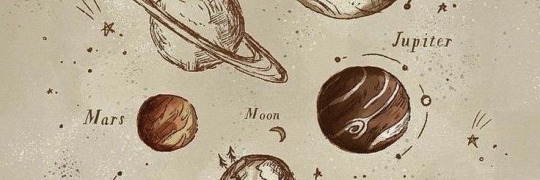
FANDOMS MASTERLIST!! (this is long k im sorry)
• YELLOWJACKETS
natalie scatorccio, lottie matthews, shauna shipman, van palmer, taissa turner, misty quigley, jackie taylor, callie sadecki, laura lee
• ARCANE
caitlyn kiramman, vi, jinx/powder, ekko, mel medarda, jayce talis, viktor
• RIORDANVERSE
annaveth chase, percy jackson, grover underwood, leo valdez, jason grace, piper mclean, frank zhang, hazel levesque, nico di angelo, will solace, silena beauregard, charles beckendorf, thalia grace, clarisse la rue, rachel elizabeth dare, ethan nakamura, luke castellan, travis/connor stoll, lityerses, reyna ramirez-arellano, lester papadopoulos, katie gardner
• WIZARDING WORLD
remus lupin, evan rosier, regulus black, barty croush jr, james potter, sirius black, marlene mckinnon, lily evans, harry potter, hermione granger, ron weasley, fred/george, luna lovegood, neville longbottom, ginny weasley, theodore nott
• THE HUNGER GAMES
katniss everdeen, peeta mellark, finnick odair, johanna manson, haymitch abernathy, lucy gray
• THE MAZE RUNNER
thomas, newt, minho, theresa, frypan, aris, brenda
• CRIMINAL MINDS
emily prentiss, spencer reid, jennifer jareaux, derek morgan, aaron hotchner, penelope garcia, elle greenaway
• BRIDGERTON
anthony bridgerton, benedict bridgerton, colin bridgerton, daphne bridgerton, eloise bridgerton, francesca bridgerton, penelope featherington, kate sharma, edwina sharma, simon basset, theo sharpe, violet bridgerton, kind george, charlotte
• THE WALKING DEAD
rick grimes, carl grimes, daryl dixon, carol peletier, maggie greene, michonne, glenn rhee, rosita espinosa, aaron, tara chambler
• GRISHAVERSE
kaz brekker, alina starkov, malyen oretsev, inej gafha, jesper fahey, wylan van eck, nikolai lantsov, nina zenik, zoya nazyalensky, matthias helvar
• MARVEL
tony stark, steve rogers, natasha romanoff, yelena belova, thor odinson, loki odinson, bruce banner, clint barton, kate bishop, carol danvers, scott lang, wanda maximoff, vision, agatha harkness, bucky barnes, sam wilson, stephen strange, kamala khan, matt murdock, jessica jones, charles xavier, erik lensherr, logan howlett, raven darkholme, peter maximoff, jean grey, scott summers, alex summers, any spiderman ever made
• COBRA KAI/KARATE KID
miguel diaz, robby keene, eli moskowitz, sam larusso, tory nichols, daniel larusso, johnny lawrence, demetri alexopoulos, anthony larusso, devon lee, kenny payne
• SCREAM
sidney prescott, gale weathers, dewey riley, billy loomis, stu macher, tara carpenter, samantha carpenter, tatum riley, jill roberts, amber freeman, chad meeks-martin, mindy meeks-martin, wes hicks, randy meeks, charlie walker, roman bridger, ethan landry, quinn bailey
• STRANGER THINGS
steve harrington, robin buckley, nancy wheeler, jonathan byers, eddie munson, eleven hopper, jim hopper, joyce byers, will byers, mike wheeler, max mayfield, dustin henderson, lucas sinclair
• YOU
love quinn, joe goldberg, guinevere beck, ellie alves, delilah alves, lady phoebe, forty quinn
• THE LAST OF US
ellie williams, joel miller, abby anderson, dina, tommy miller
• THE BEAR
carmy berzatto, sydney adamu, marcus brooks, richie jerimovich, natalie berzatto, michael berzatto, tina marrero, claire dunlap
• TEEN WOLF
scott mccall, stiles stilinski, theo raeken, liam dunbar, derek hale, allison argent, lydia martin, isaac lahey, peter hale, malia tate, kira yukimura, deucalion, chris argent, cora hale, nolan holloway, mason hewitt, brett talbot, corey bryant
• AGGGTM
pippa fitz-amobi, ravi singh, cara ward, andie bell, sal singh, nat da silva, connor reynolds, jamie reynolds, naomi ward, zach chen
• SHAMELESS
fiona gallagher, lip gallagher, ian gallagher, debby gallagher, carl gallagher, mickey milkovich, kevin ball, veronica fisher, mandy milkovich, svetlana yevgenivna, sandy milkovich
• OUTER BANKS
sarah cameron, kiara carrera, cleo anderson, john b routlege, jj maybank, rafe cameron, pope heyward, sofia
• THE WILDS
shelby goodkind, leah rilke, toni shalifoe, nora reid, martha backburn, rachel reid, fatin jadmani, dot campbell
• THE VAMPIRE DIARIES (s1-2-3)
elena gilbert, stefan salvatore, damon salvatore, caroline forbes, tyler lockwood, jeremy gilbert, elijah mikaelson, rebekah mikaelson, klaus mikaelson, alaric saltzman
more... heartless, the sex lives of college girls, hill house/bly manor, bottoms, challengers, normal people, fallout, sweetpea, tvd s1, one piece, derry girls, heartstopper, locke & key s1, mlwtwb, ATLA, manifest, heartbreak high, young royals
i'm probably missing things so this will be get updated || if someone you want to request is not in here, you're free to ask me since i probably forgot some people
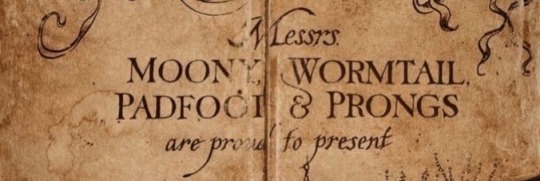
#nini talks!#ai bots#bots#janitor ai#character ai#yellowjackets#arcane#percy jackon and the olympians#sweetpea#fallout#outer banks#cobra kai#shameless#a good girls guide to murder#teen wolf#the bear#the last of us#stranger things#scream#marvel#grishaverse#riordanverse#wizarding world#the walking dead#bridgerton#criminal minds#the maze runner#the hunger games
3 notes
·
View notes
Text
For black history month, I’d like to shed some light on some of my favorite queer people of color. 🏳️⚧️🏳️🌈💗
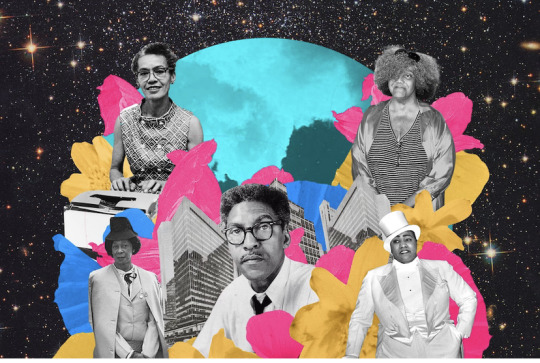
1). MARSHA. P JOHNSON ✨
Marsha. P Johnson was an American drag queen born August 24th 1945. Johnson was known for being a prolific queer and trans right advocate. She was also apart of the stone wall riots which sent of a wave of LGBTQ rights and protests. A quote by her:
“Darling, I want my gay rights now. I think it’s about time the gay brothers and sisters got their rights… especially the women.”

2). LUCY HICKS ANDERSON.
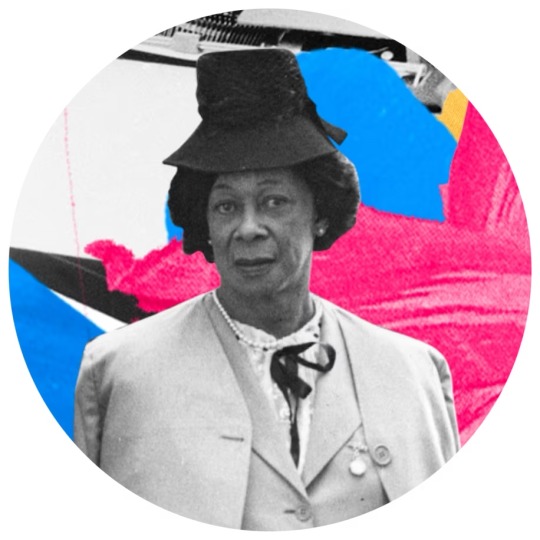
Lucy Hicks Anderson was a transgender pioneer for marriage equality. She was known as Americas first ever prominent trans women. Lucy was married to her husband, and paved the way for marriage equality. A quote by her:
“I defy any doctor in the world to prove that I am a woman.”
3). BAYARD RUSTIN.
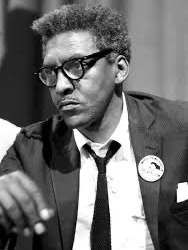
Bayard Rustin was a gay civil rights activist. He is heavily recognized as being a key part in the civil rights movement. He was a prominent gay man during the civil rights movement when there was no space to talk about lesbian and gay issues. A quote by him:
“If we desire a society of peace, then we cannot achieve such a society through violence. If we desire a society without discrimination, then we must not discriminate against anyone in the process of building this society. If we desire a society that is democratic, then democracy must become a means as well as an end.”
4). AUDRE LORDE
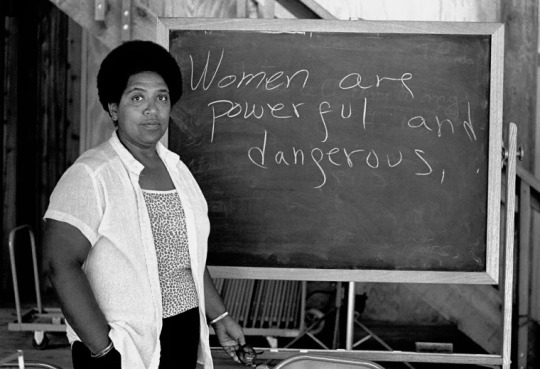
Audre Lorde was a lesbian poet. Who made lasting contributions to feminist activism and history. Being known as a fierce advocate for queer, black, and women’s rights. Among her most notable works are “Coal” (1976), “The Black Unicorn” (1978), “The Cancer Journals” (1980) and “Zami: A New Spelling of My Name” (1982). A quote from her:
“I write for those women who do not speak, for those who do not have a voice because they were so terrified, because we are taught to respect fear more than ourselves.”
5). JAMES BALDWIN
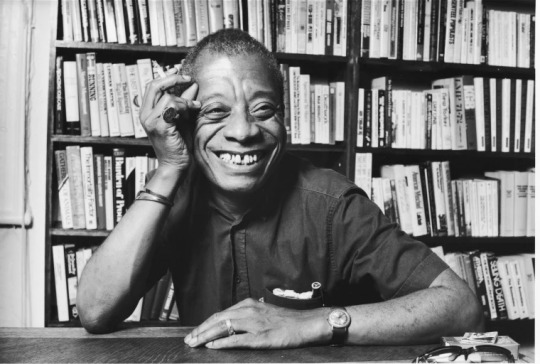
James Baldwin was a American writer and social critic. He is perhaps best known for his 1955 collection of essays, "Notes of a Native Son," and his groundbreaking 1956 novel, "Giovanni's Room," which depicts themes of homosexuality and bisexuality. Which broke social norms and showed that queer people had a place in the books they read. James spent most of his career educating people on black culture and history. And taught more people about homosexuality in a good light. A quote by him:
“Everybody’s journey is individual. If you fall in love with a boy, you fall in love with a boy. The fact that many Americans consider it a disease says more about them than it does about homosexuality.”
————————
Thank you to everyone who read this all the way through! I can’t donate money to organizations but try to do the best I can. We need to start recognizing the wonderful things that have come from the black queer community. 🏳️⚧️🏳️🌈💗I hope I can do a little bit to positively help.
#queer#lgbtq community#lgbtq#educate yourself#activism#bisexual#black culture#queer poc#black history month
14 notes
·
View notes
Text

Perjury Case Goes to Superior Court:
REAFFIRMING his claim that he is a woman John Doe (Lucy) Hicks, Oxnard Negro, yesterday entered a plea of not guilty to a charge of perjury brought by District Attorney M Arthur Waite who claims Hicks is a man and fraudulently obtained a license to wed Reuben Anderson an army man here in June 1944.
Appearing before Judge Clarence Pecht in Oxnard justice court yesterday afternoon Hicks smartly dressed in women’s attire said: “My name is Lucy Hicks Anderson and I enter a plea of not guilty." Lucy was accompanied to the arraignment proceedings by several Negro women and was represented for the arraignment only.
The proceedings lasted but a few minutes and Judge Pecht -immediately bound the defendant over to superior court for further arraignment. Meanwhile the district attorney’s office is preparing an information to be filed in superior court. The superior court arraignment is set for 10 am Monday .
“Lucy” remained free on $2000 bond furnished by Willie Nae-gayle who said “Lucy” was “her sister”. “Lucy” also faces the possibility of being charged with failure to register for selective service but District Attorney Waite said this action if it is forthcoming would be handled by federal attorneys.
Hicks was arrested Friday night by Police Chief Jack Ryan in Oxnard after an earlier medical examination assertedly disclosed “Lucy” to be a male and I enter a “Lucy” was arraignment proceedings by several Negro women and was represented for the arraignment only
Oct. 23, 1945
---
Lucky Hicks lived her life as a woman. She had a community of people who loved her. The press ridiculed her. Our government charged her with fraud, and imprisoned her. It was easier to believe she was trying to dodge the draft and collect fraudulent payments.
Lucky Hicks, pictured 1946

#black queer history#queerhistory#black history#black transwomen#black people#transgender history#1940s
2 notes
·
View notes
Text
I'm currently in what i call my "Lana Del Rey phase"
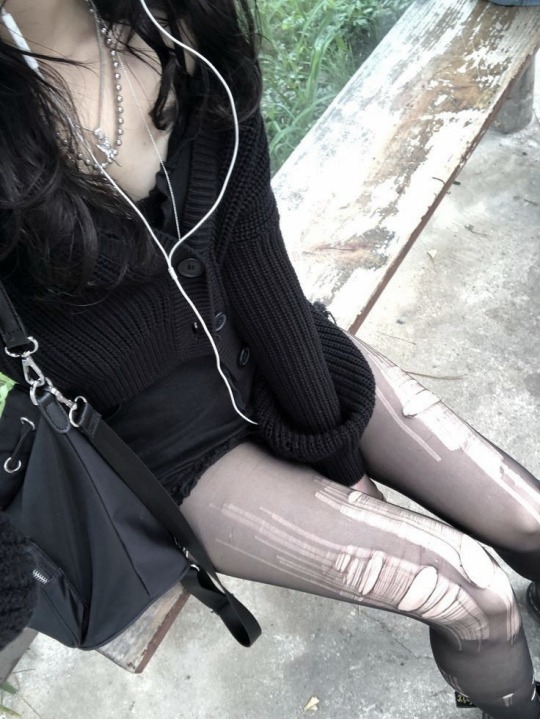
Artists: Lana, The Neighbourhood, Marina, Melanie Martinez, Mazzy Star, Sex after Cigarettes
Books ♡
Read: Still missing by Chevy Stevens, Stolen by Lucy Christopher, I stop somewhere by T.E Carter, Church by Stylo Fantome, The perfect chemistry by Simone Elkeles, Held by Edeet Ravel, Bully by Penelope Douglas, Before I fall by Lauren Oliver, The kind worth killing by Peter Swanson, Too late by Colleen Hoover, The way I used to be by Amber Smith
Tbr: Flawed by Kate Avelynn, Twilight by Stephenie Meyer, Mara Dyer triology by Michelle Hodkin, The places I've cried in public by Holly Bourne, Say I love you by Kanae Hazuki, We are okay by Nina LaCour, Hades Hangmen series by Tillie Cole, Things I'm seeing without you by Peter Bognanni, I hold your heart by Karen Gregory, The way I am now by Amber Smith, Skins by Ali Cronin, Sadie by Courtney Summers, Every day triology by David Levithan, Blackwood institute series by J. Rose, How It feels to float by Helena Fox, Emergency contact by Mary H.K Choi, Preach by Stylo Fantome, If I stay by Gayle Forman, Speak by Laurie Halse Anderson, Wrecked by E. R Frank, Red by Isobel Alice K, Asking for It by Lilah Pace, Cracked up to be by Courtney Summers, White Oleander by Janet Fitch, Hick by Andrea Portes, The torn skirt by Rebecca Godfrey,
Style essentials: chokers, platforms, tote bags, lace bras, stockings, skirts, off the shoulder tops, gloss, perfume, painted nails sparkles, red or black, fishnets, eyeliner, mascara, black n white ribbons, chains
Shows n movies: la belle personne, Hick, in treatment, skins, speak, sharing the secret, trust stoker, back roads, little tailor, the idol, look away, adolescence, baby, tart, down in the valley, i believe in unicorns, dear prudence, palo alto, shangri-la suite, before i fall, white oleander, the society, Scum's wish, Say I love you, tvd, spinning out, clementine, young & beautiful, normal people, the sistehood of the traveling pants, a faithful man, the dreamers, a faithful man
Hobbies: take pictures, listening to music while slow dancing at night, singing, reading books, write poetry, night photoshoot,
Only social media: Tumblr n Instagram
12 notes
·
View notes
Text
Transgender People In History/Today! Check out https://legacyprojectchicago.org/
The Roman emperor who ruled from 218 to 222, Elagabalus was born male but adopted feminine dress and requested genital removal surgery. However, she was shunned and assassinated at age 18. = Elagabalus was supposedly married as many as five times, also lavishing favors on male lovers. She aroused further discontent when she married the Vestal Virgin Aquilia Severa, a flagrant breach of Roman law and tradition. Her behavior estranged the Praetorian Guard, who supported her overthrow and subsequent murder.
A Black trans pioneer who was one of the first transgender women in the United States. In the 1940s, she was the first trans person to be put on trial for her identity. - Lucy Hicks Anderson. = Both Lucy Hicks Anderson and her husband were tried by the federal government. During her perjury trial Lucy Hicks Anderson insisted that a person could appear to be of one sex but actually belong to the other, saying, “I defy any doctor in the world to prove that I am not a woman.” She told reporters, “I have lived, dressed, acted just what I am, a woman.” She was placed on ten years probation as an alternative to prison. However, her troubles were not over. When the government concluded that Lucy had been illegally receiving Anderson’s allotment checks as the wife of a member of the U.S. Army, the couple was tried and convicted of fraud. – Died of natural causes in 1954 at age, 68.
A Black transgender woman and LGBTQ rights activist who helped homeless and struggling LGBTQ youth. - Marsha P. Johnson = Raids likes the one on the Stonewall Inn were not uncommon. This time, however, the patrons fought back. A shot glass was thrown into a mirror by Marsha P. Johnson who yelled ``I got my civil rights!'' That moment became known as ``the Shot Glass that was Heard Around the World.'' - In 1990, Marsha contracted AIDS. She spoke publicly about it and told people she hoped they would not be afraid of those who had the disease. On July 6, 1992, Marsha's body was found floating in the Hudson River. The police officers ruled her death a suicide.
A Scottish doctor who began taking hormones as a teen and had his birth certificate changed to male. - Ewan Forbes = Forbes led a troupe of Scottish country dancers, dressing and dancing the male part. In 1944, he graduated with medical degree from the University of Aberdeen. - 1965 when his brother died and Ewan stood to inherit the baronetcy and a large estate. A cousin challenged the inheritance, arguing that the re-registration of gender was invalid and Ewan was still legally a female, and thus was unable to inherit. The Scottish Court of Session ruled in Ewan’s favor, and in 1968 the Home Secretary confirmed the decision, granting him the title. Unfortunately, the case was conducted in secrecy, and was unable to be quoted in other judgments on the legal recognition of gender variance (though that has changed since his passing). With the case settled, the baronet returned to the life of a rural landowner. He was appointed a Justice of the Peace for Aberdeenshire in 1969 and in 1984 published The aul’ Days, a book of early reminiscences, including tales of gender displacement. He died on September 12, 1991 at age 79.
She starred in the American reality TV show called “I am Jazz” which documented her day-to-day experiences of being a transgender teenager. She also co-authored a children's book titled “I Am Jazz,” which gives a glimpse into her experience growing up questioning her gender identity. – Jazz Jennings = Jennings founded the TransKids Purple Rainbow Foundation. It aims to spread “the message of tolerance, acceptance and unconditional love which are a birthright for all trans kids.” - “So many transgender people in the community are being covered with this umbrella of misconception that we are going to hurt someone. But we are not trying to hurt anyone.”
Laverne Cox is an actress, Emmy-winning documentary film producer, and equal rights advocate. Cox is best known for her role as Sophia Burset in the Netflix series Orange Is the New Black. Cox was the first transgender performer nominated for an Emmy in an acting category. = “My name is Laverne Cox and I’m from Mobile, Alabama. Until recently, I have had a tremendous amount of shame about the bullying I experienced as a child. Whenever something would happen and my mother would find out, she would yell at me and say well why didn’t you fight back. Why aren’t you fighting back. And she would also say, what are you doing to make them treat you like that. So, I felt like it was my fault. We took the bus to school every day. I have a twin brother. They, the kids couldn’t beat us up on the bus because the bus driver was sort of watching in the rear-view mirror. But we knew that as soon as we got off the bus, we had to take off running or we’d get beaten up. And for years, I joked that I was a very fast runner as a child. And it was sort of my way of deflecting from how painful it was, to sort of feel like I was always in danger. Up until that point, everyone was telling me that I was a boy. I was 8 years old and I was just convinced that I was a girl. The therapist told my mom and she yelled at me that boys are this way and girls are this way. And it was just this big thing. And, I again, internalized a lot of shame about the way I was thinking about myself and about who I was. I loved to dance as a kid. I was always dancing around. I would dance in the supermarket. I would just dance everywhere. Back when PE was in schools, when the kids were doing free play, I was off dancing to music that was always in my head. And I always sort of had characters that I was playing and making up. So, I begged from 5 years old to 8 years old to be in dance classes and my mom finally found a program for me. And I believe that that saved my life. I did try to commit suicide once, when I was about 11 years old, unsuccessfully. But if I didn’t have school, my mom’s a teacher, and education and reading and something I loved and that I was good at, I don’t think I would have survived. I didn’t feel safe at all as a kid.
And I’ve had moments like that as an adult, but the difference with me as an adult is that I have support now. I have people in my life who support and validate me as who I am. As a kid, when kids were saying all these awful things about me, I thought that was the truth of who I was. And as an adult now, I find myself wanting to go back into oh people are saying this about me it must be true. But then I’m like, well no. I have people around me who are supportive and who are amazing who love me and are like no, what these people are saying about you is not who you are. And I know that that’s not who I am.
This past Christmas, my mom and I were, we were just talking and we hadn’t talked about the bullying stuff but you know, she, my mom she’s very aware of what’s been going on in the news with all the bullying stories. And she, it just sort of came up and she just said, just out of nowhere she said, “I’m sorry, I didn’t know how to… I didn’t know what to do. I’m sorry I didn’t know how to deal with it.” She had her way and she thought that was the way and it didn’t work. And she loves me, and she supports me, and she’s proud of me. And that’s all I really wanted as a kid to have my mom be proud of me. That’s all I wanted. And she is, so that’s kind of amazing.”
The Wachowskis: The Wachowskis are trans women who wrote and directed The Matrix (1999), Cloud Atlas (2012), and Bound (1996). They won the Saturn Award for Best Director for The Matrix. The Wachowskis have said that the original Matrix was written as a trans allegory. = Lana – “For years, I couldn't even say the words 'transgendered' or 'transsexual' - "When I began to admit it to myself, I knew I would eventually have to tell my parents and my brother and my sisters.” - "This fact would inject such terror into me that I would not sleep for days. I developed a plan that I worked out with my therapist. It was going to take three years. Maybe five." Lilly came out publicly as trans in 2016 after a reporter from the Daily Mail turned up at her door. “I just wanted - needed some time to get my head right, to feel comfortable. But apparently, I don't get to decide this," she said in a statement to the Windy City Times afterwards. "I am one of the lucky ones. Having the support of my family and the means to afford doctors and therapists has given me the chance to actually survive this process.” - "Transgender people without support, means and privilege do not have this luxury. And many do not survive." – “The Matrix trilogy - and particularly the first film, which won four Academy Awards - appear in plenty of lists about the "greatest science fiction films of all-time".
1 note
·
View note